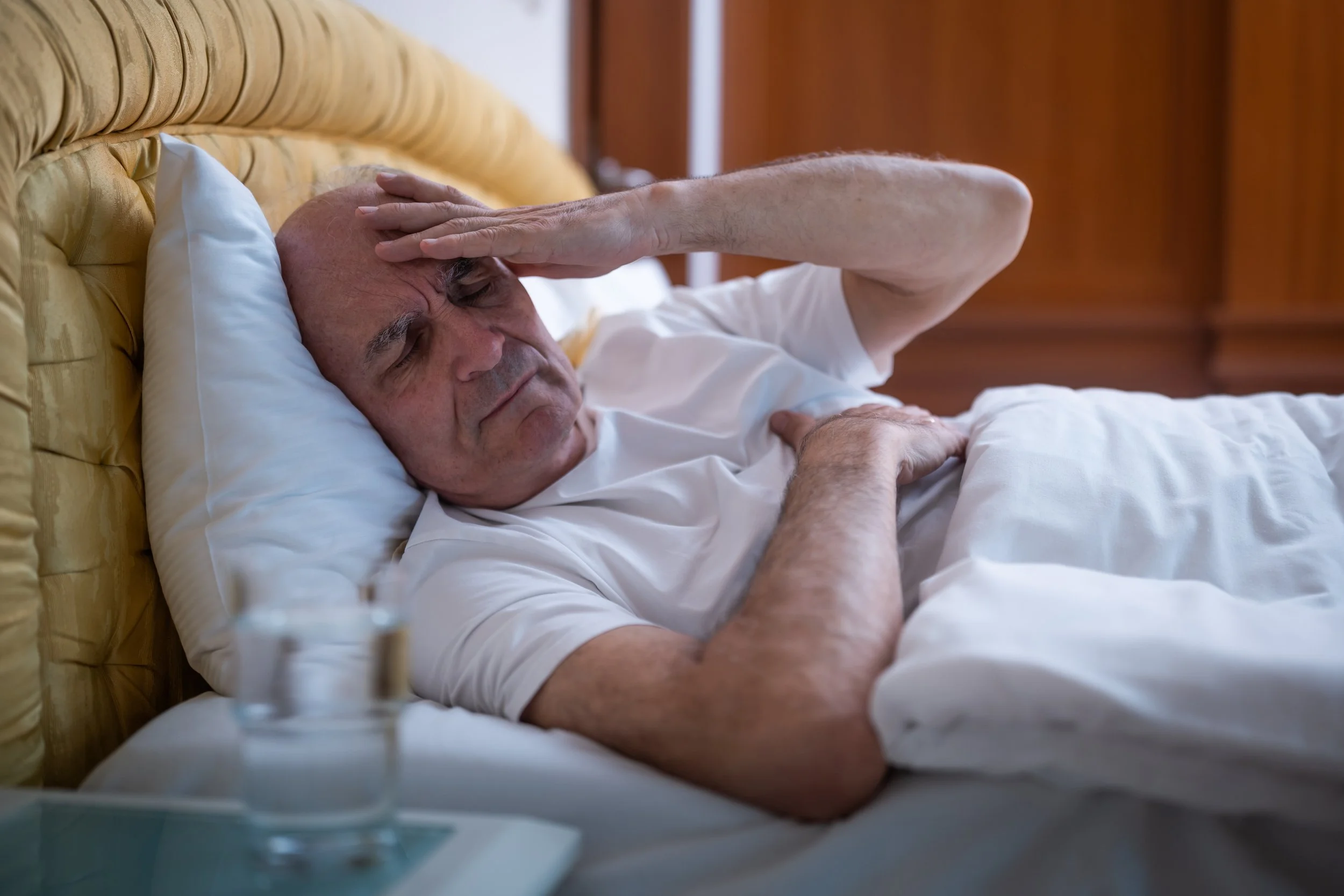
SLEEP BEHAVOUR DISORDERS
PARASOMNIAS (REM-SLEEP BEHAVIOUR DISORDERS)
RBD episodes occur during rapid-eye-movement (REM) sleep. Normal sleep consists of a series of REM dream episodes, that occur about every 1 ½ to 2 hours each night. This means that an RBD episode tends to first appear at least 1 ½ hours after falling asleep. Episodes may continue to occur until waking up in the morning. Active RBD episodes may appear as many as four times per night. They may also occur as rarely as once per week or per month. RBD does not normally appear during a nap.
RBD can be confused with sleepwalking and sleep terrors. In these other disorders, the sleeper is usually confused upon waking up and would not be alert. In contrast, it is normally easy to wake a person with RBD who is acting out a dream. Once awake, he or she is also able to recall clear details of the vivid dream.
The details of this dream match the unusual behaviour of an RBD episode. These actions may include any of the following:
Shouting Punching
Swearing Kicking
Flailing Jumping
Grabbing Leaping
An RBD episode often disrupts the sleep of a bed partner. This is how a person with RBD may become aware of the problem. People with RBD are not more aggressive or violent than others when awake. RBD is a medical problem
(source: uhnm.nhs.uk)
SLEEP-RELATED MOVEMENT DISORDERS (PERIODIC LIMB MOVEMENT DISORDER)
Periodic Limb Movement Disorder is repetitive cramping or jerking of the legs during sleep. It is the only movement disorder that occurs only during sleep, and it is sometimes called periodic leg (or limb) movements during sleep.
PLMD may occur with other sleep disorders. It is often linked with restless legs syndrome, but they are not the same thing.
PLMD can occur at any age and occurs in approximately 4% of adults. Like many sleep disorders, PLMD is more common in middle-aged and older people and female. It also occurs in shift workers and those who have irregular sleep patterns.
(source: uhnm.nhs.uk)
OTHER SLEEP DISORDERS
These types of sleep disorders do not fit into any of the other categories, such as disorders related to environmental disturbances.
